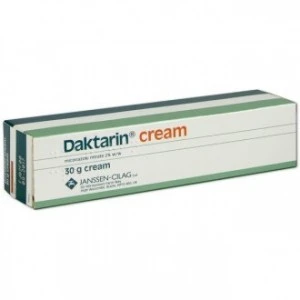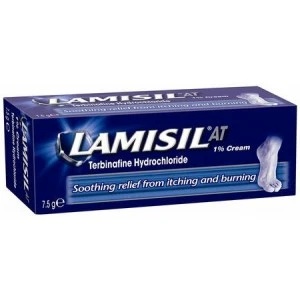Athlete's foot
Athlete's foot is a common fungal infection which develops flaky, itchy patches between the toes. If you have an infection of athlete's foot, treatment will be necessary because the infection does not get better on its own.
What is athlete's foot?
Athlete's foot (tinea pedis) is a contagious infection caused by a fungus. Fungi responsible for causing athlete's foot include Trichophyton, Microsporum, and Epidermophyton. While the infection can affect any part of the foot, it is most common between the toes.
Despite its name, it doesn't just affect athlete's foot. Though the name is rooted in athleticism due to the warm, moist environments to which athletes' feet are subjected during activities.
The condition is estimated to affect approximately 15% of the population, with a higher incidence in men than in women. Fungal infections can develop from an overgrowth of the natural fungi on our skin. However, infections can also be contracted through physical contact with contaminated surfaces, such as towels, socks, shoes, and the floors of communal changing facilities.
If you have an infection of athlete's foot, it is essential to seek treatment to prevent the infection from spreading to other areas of your body or other people.
What are the symptoms of athlete's foot?
Typically, athlete's foot infections appear at the front of the foot, around and between the toes.
Symptoms may include:
- Cracked skin, which may bleed
- Itching, red rash between the toes
- Skin scaling around the toes
- Small bumps on the feet
In rare cases, the infection can spread to the soles of the feet and cause different symptoms, including:
- Itching
- Red skin and white lines on the sole
- Skin scaling
If you notice the symptoms of an athlete's foot infection and are unsure whether you have an infection, speak to your doctor.
How can athlete's foot be prevented?
Athlete's foot can be prevented by keeping feet clean and dry.
You should avoid traversing barefoot across changing rooms to reduce your chance of contracting the infection. Wear sandals or flip-flops when you are by the pool or in changing rooms. Footwear such as this exposes the fungi to harmful UV radiation, which can kill the cells. Of course, it's essential to exercise caution when exposing your skin to harmful UV rays.
While wearing clean, dry socks every day is a great preventive measure, consider changing your socks in warmer weather or after participating in physical activities. After changing your socks, wash your old socks as soon as possible to prevent the conditions for fungi to thrive.
A common strategy to prevent the development of athlete's foot is to 'air out' the feet and allow them to 'breathe'. As you exercise, your body produces sweat to cool itself down. The sweat evaporates from the skin, taking the heat with it. However, shoes, socks and other porous materials can absorb this sweat. Not only will the moist environment breed bacteria, but the material also prevents the heat from escaping the body. Letting your feet 'breathe', by not wearing socks or shoes for a short while, can allow the sweat to evaporate effectively, cooling the skin and preventing the build-up of moisture.
Spraying the inside of your shoes with an antifungal spray, while not always necessary, can provide some preventive benefit and peace of mind. Using an antiperspirant on your feet can also help reduce sweating and keep your feet fresh.
Fungi, such as those that cause athlete's foot, can survive on surfaces like towels, socks, and other materials. Due to this, it is important to keep these materials clean. Regularly wash your socks and towels, and keep them dry to prevent them from becoming infected.
Using a towel contaminated with fungal spores can increase the risk of the infection spreading, potentially leading to a fungal nail infection or a fungal infection elsewhere on the body.
By taking precautionary measures, athlete's foot can be averted.
How is athlete's foot treated?
Athlete's foot does not clear up on its own and, if left untreated, can lead to a fungal nail infection. If you are suffering from a bout of athlete's foot, you should seek treatment to prevent the infection from spreading to other parts of your body or other people.
Athlete's foot is typically treated with antifungals. These medicines work in one of two ways to eliminate the fungal infection from the foot.
Some medicines work by inhibiting the fungal cells' ability to produce a substance they need to survive. Without this, the cells become weak and are destroyed.
Other medicines work by preventing the fungus from spreading. This gives the immune system a better chance of eliminating the infection.
The treatment you use for athlete's foot depends on the severity of your particular infection. In many cases, an antifungal topical cream can be applied directly to the affected area of the skin. These topical treatments contain ingredients that can bring relief from the itching and discomfort caused by athlete's foot. More severe cases may require an oral antifungal.
Our prescribing doctors can prescribe the most suitable treatment for you based on your specific condition.
Authored By

Mohamed Imran Lakhi
MPharm - Lead PharmacistPublished on: 01/04/2019
Reviewed By

Dr Giuseppe Aragona
DoctorReviewed on: 28/04/2023
© 2013 - 2025 Al Muhsineen Limited. All Rights Reserved. Registered Pharmacy: 34 Halliwell Road, Bolton BL1 8RL. Registered Office: 254 First Floor, Shearbrow, Blackburn, England, BB1 8DS








